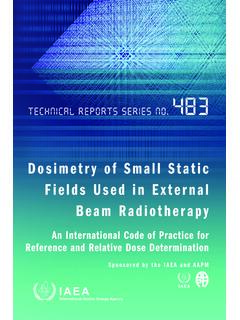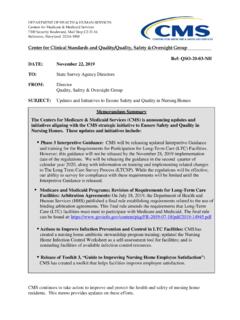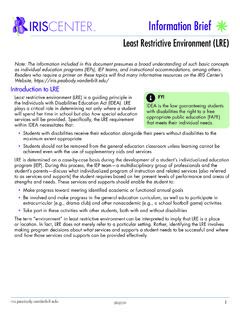Transcription of Forensic Interviewing: A Primer for Child ... - Child Welfare
1 Children s Bureau/ACYF/ | Email: | 2017 Forensic Interviewing: A Primer for Child Welfare ProfessionalsWHAT S INSIDEO verviewForensic interviewing modelsImportant considerationsTrainingConclusionReferenc esForensic interviewing is a means of gathering information from a victim or witness for use in a legal setting, such as a court hearing. It is a key component of many Child protective services investigations. The purpose of these interviews is to gather factual information in a legally defensible and developmentally appropriate manner about whether a Child (or other person) has been abused (Newlin et al., 2015). Forensic interviews are conducted by trained professionals, including Child Welfare caseworkers, law enforcement, and specialized Forensic interviewers at children s advocacy centers (CACs).
2 These interviewers are frequently part of a multidisciplinary team investigating the case. This factsheet provides Child Welfare professionals with a brief overview of Forensic interviewing so they can better understand how such interviews affect their practice with children and 2017h tylp0ys0 gf22 This material may be freely reproduced and distributed. However, when doing so, please credit Child Welfare Information Gateway. This publication is available online at the 1980s, the manner in which children were interviewed during Child abuse investigations came under increased scrutiny (Faller, 2015). This was largely due to high-profile cases involving sexual abuse at Child care centers.
3 Critics of the interviews asserted children were coerced or otherwise improperly interviewed. The assertion that many interviews about alleged incidences of Child abuse were conducted improperly helped energize a review and reformation of the interviewing process (Faller, 2015). The Forensic interviews conducted with alleged victims of Child abuse are often essential to the investigation because, particularly in sexual abuse cases, the alleged victim and alleged perpetrator may be the only people who know what really happened (Mart, 2010). Research on interview techniques, Child development, and other related topics shaped what is now referred to as Forensic interviewing in Child Welfare interviews are used by trained professionals to gather information about incidents of alleged Child abuse in a manner that will yield factual information from the Child and stand up to scrutiny in court.
4 For example, Forensic interviewing techniques are designed to remove or minimize the potential for the interviewer to use suggestive or leading questions that may call the Child s statements into question. Forensic interviews can also help shape the investigation by highlighting areas for further investigation or evidence collection. There are more than a dozen well-respected interview models (see the Forensic Interviewing Models section of this publication). Model use varies by jurisdiction, agency , and interviewer training. Who conducts the Forensic interview also varies. Many jurisdictions use specialized Forensic interviewers whose primary role is to conduct Forensic interviews; other jurisdictions rely on law enforcement, Child Welfare , or other professionals who have been trained in Forensic interviewing.
5 Other professionals may observe the interview either from behind a one-way mirror, by using a real-time video link, or by accessing audio or video recordings. Only trained professionals should conduct Forensic interviews (McCoy & Keen, 2014). The interviews are often conducted at CACs, which began in the 1980s. CACs use a multidisciplinary approach to coordinate the response to Child maltreatment, which can help reduce the number of interviews children experience and provides a central process to coordinate all necessary services and supports. (For more information about CACs, visit the National Children s Advocacy Center website at ) Interviews may also be conducted in other locations in the community that are Child friendly and otherwise appropriate for the interview ( , private, quiet).
6 The requirements or guidance about which cases should include a Forensic interview may vary by jurisdiction. Child Welfare professionals and others working on the case should consult their supervisors, other agency staff, or law enforcement about the circumstances under which a Forensic interview should be Interviewing ModelsA variety of Forensic interviewing models have been developed, and the one used in a Child protective or criminal investigation may vary depending on jurisdiction, agency , or the training of the interviewer. The following are examples of Forensic interviewing models; however, this is not an exhaustive list: American Professional Society on the Abuse of Children Practice Guidelines ( ) CornerHouse Forensic Interview Protocol ( ) National Children s Advocacy Center Forensic Interview Structure ( ) National Institute of Child Health and Human Development Forensic Interview Protocol ChildFirst Forensic Interviewing Protocol ( ) 2017h tylp0ys0 gf23 This material may be freely reproduced and distributed.
7 However, when doing so, please credit Child Welfare Information Gateway. This publication is available online at the exact methods employed in each model differ to some extent, they all tend to have the following phases in common (Newlin et al., 2015): Rapport-building phase: The interviewer attempts to build a trusting relationship with the Child and explains some of the details about the interview process ( , documentation, instructions). This phase also allows the interviewer to better understand the Child s developmental level, linguistic capabilities, legal competency, and other characteristics and may provide the Child with opportunities to practice providing narrative information.
8 Substantive phase: The interviewer seeks information related to the alleged abuse. This may include obtaining a narrative description of the event, inquiring about additional details, and testing alternative or multiple hypotheses ( , other possible scenarios), if appropriate. Closure phase: The interviewer may address the Child s socioemotional or other immediate needs, transition to a topic not related to the alleged incident, or answer any following are some of the ways in which Forensic interviewing models differ: Interview structure: Models may be scripted ( , interviewers are provided what to say verbatim), semi-structured ( , interviewers are given guidance but are able to make certain decisions about how to proceed), or flexible ( , the interviewer is given great leeway so he or she can better follow the lead of the Child ) (Faller, 2015).
9 Instructions: The exact instructions, or ground rules, presented to the Child differ from one model to the next. Common topics covered by the instructions include requesting that the Child only provide information about things that actually happened, giving the Child permission to say I don t know, advising the Child to ask the interviewer to clarify a question if the Child does not understand, and informing the Child to alert the interviewer if the interviewer provides incorrect information. There is also some variation regarding when the interviewer provides the instruction. For example, most models provide the instructions during the rapport phase, but the CornerHouse method calls for the interviewer to provide some instruction at the beginning and then incorporate instructions throughout the interview, where appropriate (Anderson, 2013).
10 The interviewer also may provide the Child with opportunities to practice following the instructions ( , asking the Child a question to which he or she would not know the answer in order to see if he or she will respond with I don t know ). Truthfulness discussion: During the rapport-building phase, some models request that the interviewer ask the Child to promise to tell the truth and/or for the interviewer to address the difference between telling the truth and a lie. Analogue research shows that children tend to be more likely to tell the truth if they promised to do so prior to being interviewed about the event in question, but the evidence is not as strong about whether having a moral discussion about truth and lies increases truthfulness (Evans & Lee, 2010).













